The peculiar looking ungulate Macrauchenia (“large neck”) inhabited South America for roughly 7 million years, from the Miocene to the Late Pleistocene, only becoming extinct around 20,000 years ago. This herbivorous animal resembled a camelid superficially, when in reality it was a member of an extinct order called Litopterna. One of the most intriguing characteristics of this mammal was its short trunk. The holotype specimen of Macrauchenia was discovered and collected in Port St. Julian, Argentina by Charles Darwin in 1834, during the famous voyage of the HMS Beagle. The fossil was not described or named until Darwin returned to England with it in 1837 and showed it to famous anatomist Richard Owen.
Macrauchenia is no stranger to prehistoric toys, oddly enough. There are have been multiple cheap plastic versions of this animal marketed by several companies for decades, often packaged with dinosaurs. Schleich’s version was first released in 2003 and is currently still in production. This figure is 6.5 in. (15 cm) long and 3.25 in. (8.5 cm) tall, which puts the figure at roughly 1:20 scale. The pose is a bit static but still very lifelike to me.
Schleich figures are hand painted, and I think the coloration of this figure is probably not too far off from what the animal probably looked like in life, having lived in a grassland habitat in prehistoric Patagonia. The underside is a creamy tan color while the overcoat is a warm butterscotch brown with darker brown accents. The hooves are dark brown and there are dark brown markings on the skull and trunk. Its eyes are black. I think Schleich did a great job sculpting the illusion of fur on this figure. The coat on its back is smooth and short while around the flanks and underside it gets much shaggier and more detailed. Great effect!
While Schleich often stumbles with their dinosaurs, their mammal series is very well done, and this Macrauchenia is no exception. This is a very faithful replica of the living animal and it’s certainly the best Macrauchenia toy available today. There is a hump of muscle near the shoulders and also muscle detail in the neck and other areas of the body, helping making this a very realistic figure. Each limb ends in three-toed hooves, a characteristic of Macrauchenia along with its distinctive trunk. All in all things are very well proportioned here. I think Schleich should further expand their prehistoric mammal series because we could get some great figures out of it!
This is a brilliant figure of this unique mammal and I recommend it to anyone interested in collecting prehistoric figures, and not just dinosaurs. It’s still in production and is available from a wide variety of retailers online.
Disclaimer: links to Ebay and Amazon on the DinoToyBlog are affiliate links, so we make a small commission if you use them. Thanks for supporting us!




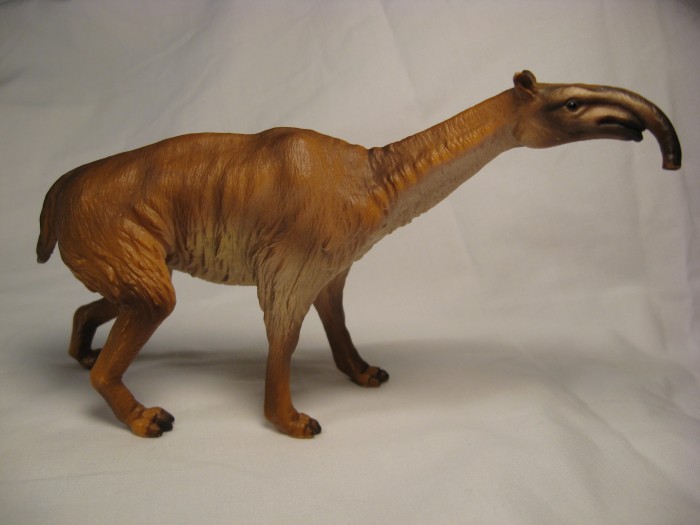
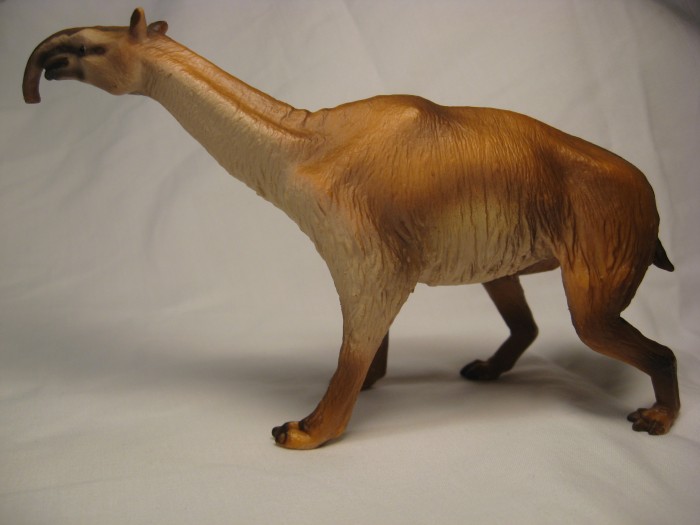
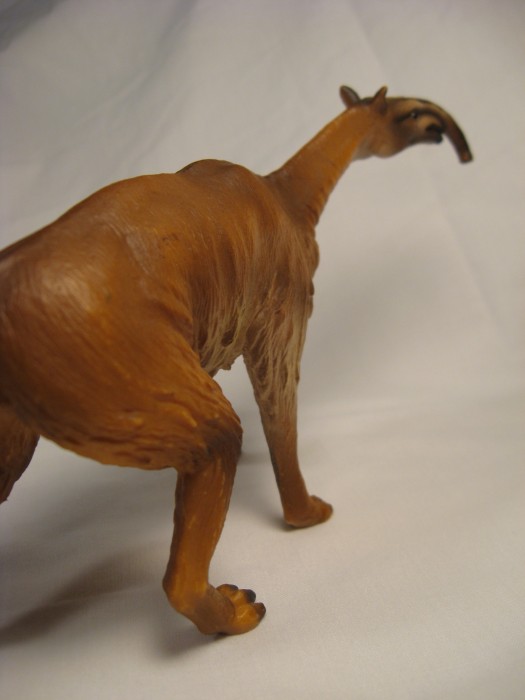
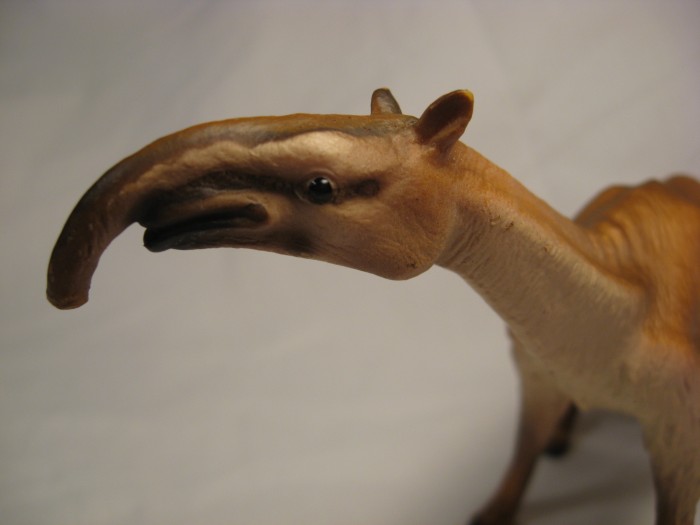
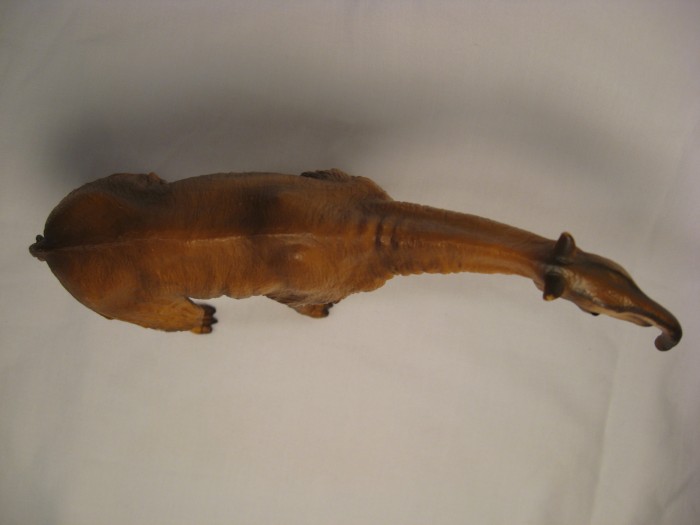
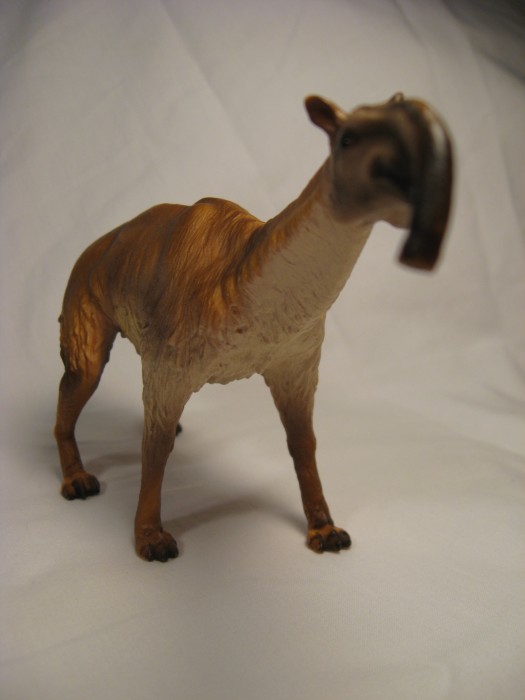
[…] 2003, Schleich released six prehistoric mammals, two Woolly Mammoths (adult and calf), Megatherium, Machruchania, Cave Bear, Glyptodon, and Smilodon. Some of these figures appear to be modeled after the BBC […]
Me ratifico en el comentario hecho. Pero una puntualización no hecha. El Ursus Spelaeus u Oso de las Cavernas. Se parece a una figura un tanto esperpéntica. Parece más a un Ursus Simus mal hecho que fue habitante de Norteamérica y se encontró en el Rancho de la Brea en los Ángeles. Sin embargo en el Macrauchenia no me convence su cabeza. Se podía mejorar.
That’s true, macrauchenia is very nice, but I have all collection and I don’t like the saber tootth, the cave bear nor mammoths! Those last two are best done by Procon along its Paraceratherium, Safari has nice mammals too!
Yeah the cave bear does look pretty weird…I say its the odd one out though. I read several conflicting translations of the name while I was writing the blog, but I trust you’re right 🙂
This is my favourite prehistoric mammal by Schleich. Some of the other figures of the series, e.g. the Cave Bear, look very strange, though. But I agree, I would also love to see Schleich making more prehistoric mammals. By the way, Macrauchenia is derived from classical greek “makros” = large and “auchenos” = neck.